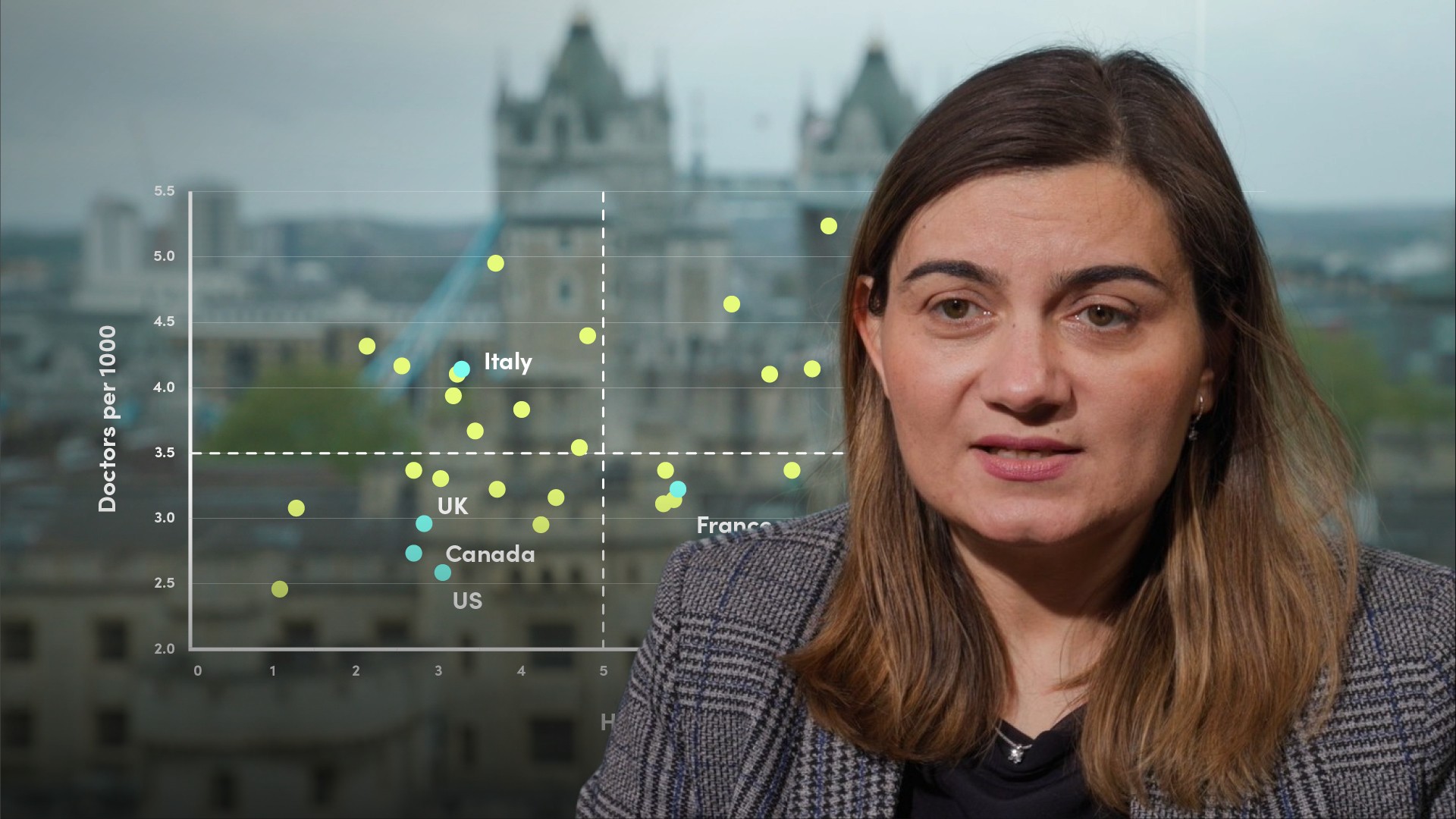
UK Economic Outlook Spring 2021

Hande Kucuk
20 years: Economist
In this video, Hande examines the main highlights from the Spring 2021 issue of the National Institute UK Economic Outlook, focusing on the determinants of the UK economic recovery from the pandemic, the major risks surrounding it and the expected challenges of the post-pandemic economic landscape.
In this video, Hande examines the main highlights from the Spring 2021 issue of the National Institute UK Economic Outlook, focusing on the determinants of the UK economic recovery from the pandemic, the major risks surrounding it and the expected challenges of the post-pandemic economic landscape.

UK Economic Outlook Spring 2021
14 mins 32 secs
Key learning objectives:
Explain the major risks surrounding the recovery
Identify the main highlights from the Spring 2021 issue of the NIESR outlook
Outline the determinants of the UK economic recovery from the pandemic
Identify the expected challenges of the post-pandemic economic landscape
Overview:
The outlook for the UK economy is less certain given the economic and social challenges that existed before the pandemic. However, there is forecasted to be a ‘building back better’ process with a long-term recovery. However, there are principal risks associated with this that must be considered.
According to the central forecast, what are the GDP forecasts, and what are the drivers?
- UK economic or GDP growth to be 5.7 per cent this year and 4.5 per cent for next year
- A strong recovery in GDP in the second quarter of this year is likely to be driven by the hospitality, retail, arts and recreation sectors, followed by slower but still historically large growth in the third and fourth quarters
What is the dynamic economic landscape?
- The immediate economic effects of the virus are expected to wane
- Remaining negative consequences of Brexit such as more barriers to trade and supply chain reallocation will make themselves felt over the long-run and largely in sectors less affected by Covid-19
How has consumption and saving affected the forecasts?
- According to calculations, over the period April 2020 – March 2021, households have accumulated around £160 billion of savings - largely as a result of reduced opportunities for spending in the pandemic
- Looking ahead, forecasts for household consumption are for growth of 8 per cent in the second quarter of the year and 5.9 per cent in 2021 overall
- After last year’s peak at around 16 per cent, forecasts predict household savings rates to settle slightly above 9 per cent
What are driving these household saving forecasts?
Forecasts for the household savings path reflect a combination of precautionary motives given ongoing uncertainty about the pandemic and the labour market outcomes, as well as expectations of higher taxes in the future given the unprecedented rise in public debt. Analysis shows that, compared to our main-case scenario, the UK GDP could be 2-3 per cent higher by the end of this year, if the saving rate drops by a further 3% to its pre-Covid level of 6 per cent immediately, or households run down their accumulated savings over the next three years in addition to reducing their savings to current income.What are the forecasts for employment?
- With nearly five million people on furlough in February 2021, we now forecast unemployment to peak at 6.5 per cent in the final quarter of this year. We forecast the number of furloughed workers to decline steadily from the end of March until September when the furlough scheme is planned to end
- The largest share of employment losses this year are expected to be in the private non-traded services sector, including hospitality and arts, which will shed a further 190,000 jobs after the furlough scheme comes to an end later this year
Why are demand expectations important, and what are the forecasts?
Business surveys indicate a strong degree of optimism for the future led by expectations of a strong recovery in profits and strong hiring and investment intentions. In our main-case scenario, we forecast business investment to grow by 6.6 per cent this year and by 6.7 per cent in 2022.What is the predicted impact of the government’s proposed ‘superdeduction’ tax policy?
The government’s announced tax policy in the form of a corporation tax ‘superdeduction’ to be followed by a rise in the main rate of corporation tax in 2023 will act to smooth investment in the short term and reduce it in the long term. As a result, firms will bring forward investments, which will accelerate the recovery in GDP. Over the course of the forecast period, the private sector capital stock is set to grow by slightly over 1 percent per year, reflecting weak pre-Covid trends and the effects of Brexit.What are the inflation & monetary policy expectations?
- Inflation is expected to rise in the short-term thanks to demand pressures and base effects. In our main-case scenario, we forecast CPI inflation to rise to 1.8 per cent in the last quarter of 2021. CPI inflation to reach close to, but remain below, its 2 per cent target in each year of the forecast
- Policy interest rates remain at their current level of 0.1 in our main case forecast scenario for the next two years
- There is a possibility of higher inflation driven by a stronger than expected recovery in consumption as we emerge from the pandemic on the back of a successful vaccination programme. Despite this, we do not expect a prolonged rise in inflation
What does the post-pandemic economic landscape look like?
The size of the economic fall in 2020 does mean that the level of GDP is nearly 4 per cent lower in 2025 than we had forecast it to be before the Covid-19 pandemic, equivalent to around £1350 per person per year (based on 2018 prices). According to our forecasts, UK GDP per capita is expected to fall further behind US and Germany due to divergences driven both by the initial contraction and the strength of the projected recoveries.What needs to be done in order to rebuild the economy?
A new fiscal policy framework is needed to combine clear principles for spending and tax to support the ultimate long-term objectives of economic policy – creating the conditions for more robust and inclusive growth. It is not enough to come out of the pandemic and simply try and put the unprecedented obstacles it created behind us; we must actively work on rebuilding the economy instead of expecting it to simply revert to its old state.
Hande Kucuk
There are no available Videos from "Hande Kucuk"

